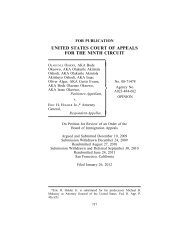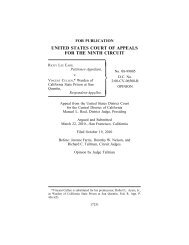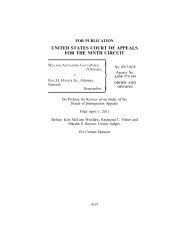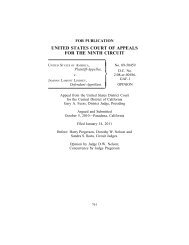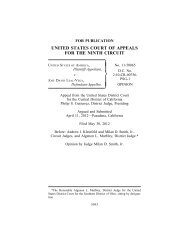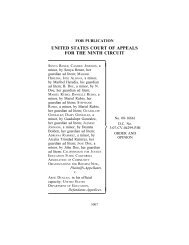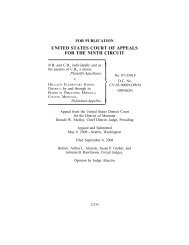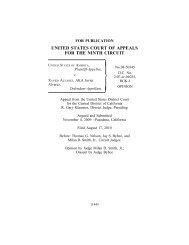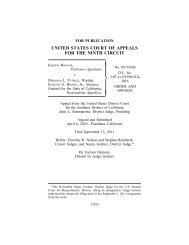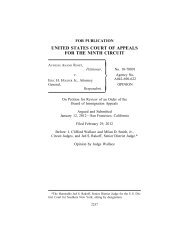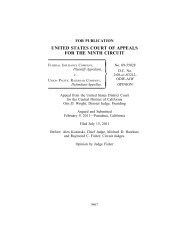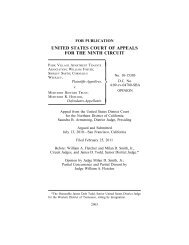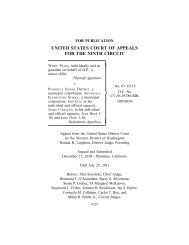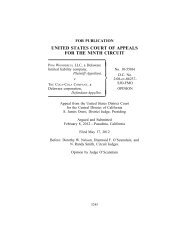NOELIA MONGE V. MAYA MAGAZINES, INC. - Ninth Circuit Court of ...
NOELIA MONGE V. MAYA MAGAZINES, INC. - Ninth Circuit Court of ...
NOELIA MONGE V. MAYA MAGAZINES, INC. - Ninth Circuit Court of ...
Create successful ePaper yourself
Turn your PDF publications into a flip-book with our unique Google optimized e-Paper software.
<strong>MONGE</strong> v. <strong>MAYA</strong> <strong>MAGAZINES</strong>, <strong>INC</strong>.<br />
9213<br />
only used five <strong>of</strong> approximately four hundred photos and<br />
three videos available to it on the memory disk. The majority’s<br />
analysis lacks any basis in law or fact.<br />
Contents unseen, Maya purchased a memory disk <strong>of</strong> four<br />
hundred photos and three videos <strong>of</strong> Noelia and Reynoso.<br />
Maya paid for that disk, in its entirety, as a compilation.<br />
Indeed, the paparazzo, Oscar Viquiera, received $1,500 for<br />
the disk, as a whole. From that disk, Maya culled through,<br />
extracted, and ultimately published five photos from the Couple’s<br />
secret wedding night to use in its photo montage exposé.<br />
Out <strong>of</strong> all <strong>of</strong> the possible photos that Maya could have<br />
selected from the disk, Maya chose those five because they<br />
told the story <strong>of</strong> the Couple’s clandestine nuptials in Las<br />
Vegas.<br />
The majority fails to address, let alone refute, the impact <strong>of</strong><br />
Maya’s selectivity because it contends that Maya’s use <strong>of</strong> the<br />
photographs must be evaluated individually since each photograph<br />
was copyrighted and registered individually. However,<br />
the majority fails to cite a single case for the proposition that,<br />
because images within a copyrightable compilation were individually<br />
registered, the amount and substantiality <strong>of</strong> the use<br />
must be evaluated on an individual basis. To the contrary,<br />
Nimmer observes, “The third factor listed in Section 107 is<br />
‘the amount and substantiality <strong>of</strong> the portion used in relation<br />
to the copyrighted work as a whole.’ The ‘copyrighted work’<br />
has been held not necessarily to correspond to the registered<br />
work.” 4 Nimmer on Copyright § 13.05 [A][3] (footnotes<br />
omitted) (emphasis added).<br />
As a matter <strong>of</strong> law, the district court could not have committed<br />
clear error because there is no binding legal authority<br />
contrary to the district court’s holding. 5 The record proves that<br />
5 Indeed, the only legal authority the Majority cites even related to this<br />
proposition is Sawyer v. Whitley, 505 U.S. 333 (1994), a Supreme <strong>Court</strong><br />
case articulating the clear error standard in a habeas petition.



